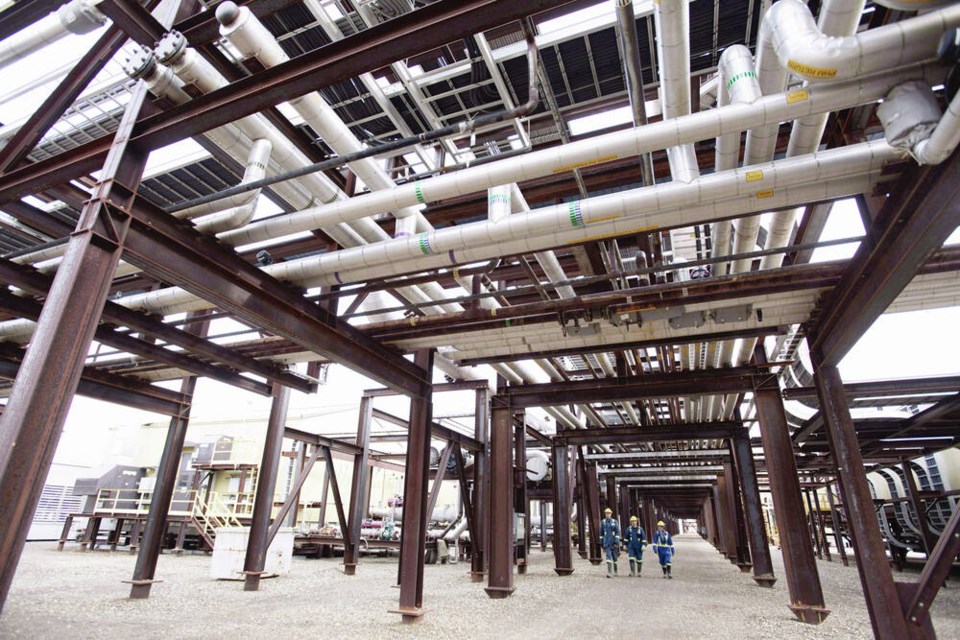CALGARY — The rising price of oil may grab most of the headlines, but another commodity — natural gas — is on an even wilder ride and expected to hit fresh heights this summer.
The war in Ukraine and resulting concerns about global energy security have driven up commodity prices worldwide. But where the price of oil is up about 85 per cent year-over-year, natural gas is up more than 200 per cent.
As of mid-day Friday, the U.S. natural gas benchmark Henry Hub price was trading around $8.75 US per million British thermal units, or MMBtu. It surged to a 14-year high of more than $9 earlier in the week, from less than $3 at this time last year.
“It’s like if oil went to $200 [per barrel] , but it’s not getting the same kind of attention,” said Dulles Wang, a Wood Mackenzie analyst based in Calgary. “And I think there’s probably still more upside potential for natural gas prices.”
Driving the growth in prices are surging liquefied natural gas (LNG) exports from the U.S. Gulf Coast, aimed at helping to meet global demand for energy, along with low North American storage levels.
Part of the reason for the low inventory levels, said Robert Fitzmartyn, managing director and head of energy research at Stifel FirstEnergy in Calgary, is increased demand as regions such as Alberta phase out coal-fired power and replace it with natural gas.
And the industry, which has gone through more than a decade of depressed prices prior to the current commodities boom and had to lay off many workers, is having a hard time keeping up.
“There’s limited labour availability to satiate elevated demand, so the price is going even higher,” Fitzmartyn said.
Natural gas prices are also heavily influenced by weather and the demand for heating and air conditioning. That means extreme heat this summer, as has been seen in North America in recent years, could spike prices higher, even above the $10 US mark.
In a recent report, the U.S. Energy Information Administration said that “natural gas prices could rise significantly above forecast levels if summer temperatures are hotter than assumed … and electricity demand is higher.”
While both Fitzmartyn and Wang are bullish on the outlook for natural gas, Wang said he expects prices will eventually come down as drillers slowly ramp up production capability to meet demand.
“I think if we can get past this summer with relatively normal weather, prices will have more downside potential after the winter of 2023,” Wang said.
Earlier this month, the 91ԭ�� Association of Energy Contractors — which represents contract drillers and well-servicing companies — revised its 2022 drilling forecast from the 6,457 rigs it had projected in November of last year to 6,902.
The CAOEC also revised its employment projections for the sector upward this month by 2,484 jobs to a total of 37,409. But CAOEC president Mark Scholz said the producers who hire the drilling rig contractors don’t seem as willing to spend money as they were back in 2008, the last time natural gas prices surged. Instead, they are taking advantage of the high prices to repair their balance sheets, as well as offering share buybacks and dividends to appease investors.
“It’s a much better industry to be in today [than in recent years], but I wouldn’t say we’re growing at 110 kilometres an hour,” Scholz said in an interview Friday. “It’s a gradual acceleration.”
Still, even a gradual acceleration is welcome news in Western Canada, which is home to the majority of the country’s natural gas production and has suffered through years of depressed commodity prices. Scholz said there’s even more for industry to be optimistic about, with Canada’s first LNG export facility (LNG Canada, currently under construction in Kitimat) expected to come online in 2026.
“These are really exciting times, and I think it shows just how important gas is going to be, both in terms of Canada’s energy transition, and also the opportunity to export it internationally,” Scholz said.



